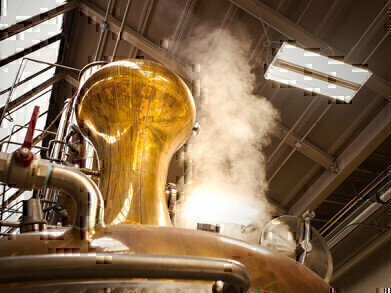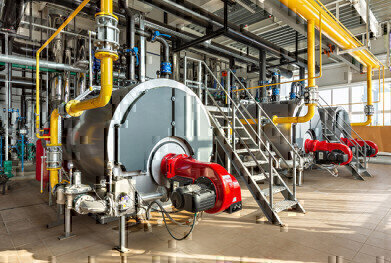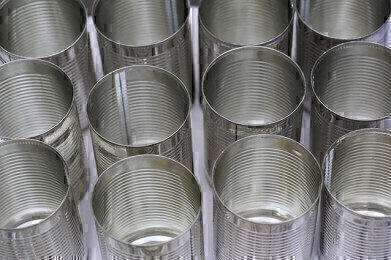Green Energy
High Temperature Industrial Heat Pumps for Energy-Efficient Steam Generation
Jul 26 2021
Author credit – Stephen B. Harrison, sbh4 consulting
Heat pumps are common for space heating. They use ambient air or soil as a heat sink and produce heat at about 50 °C, which is ideal for heating buildings. High temperature industrial heat pumps (HTIHPs) are based on a similar operating principle and have been recognised for their potential to generate steam for process heating in the food, brewing, sprits distillation, paper making, and chemicals sectors. An HTIHP requires a heat sink at a temperature of 60-120 °C to generate steam, waste heat is widely available from many processes at these temperatures.
The heating capacities of current HTIHPs range from 20 kW to 20 MW. A coefficient of performance (COP) of up to 5.8 can be achieved at 30 °C lift. A lower COP between 2.2 and 2.8 results when a 70 °C lift is produced from a heat sink temperature of 120 °C. The COP is a measure of the amount of heat energy generated by the heat pump compared to the amount of electrical power that it consumes. The use of waste heat and the thermodynamics involved, allows a heat pump to generate more heat energy than its electrical power consumption, resulting in a COP greater than 1.
From a sustainability perspective, HTIHPs are attractive for steam generation because they do not create carbon dioxide greenhouse gas emissions for boiler operation because the combustion of fossil fuels is not required. However, the heat pump must be supplied with renewable electrical power for the full environmental benefits to be realised.
Steam and water in the thermodynamic cycle
Water can be used in the thermodynamic cycle of a HTIHP to generate temperatures around 140°C. Waste heat at temperatures ranging from 85 to 95 °C can be elevated to temperatures that are required to generate process steam.
The use of steam and water in such a thermodynamic cycle is the basic principle behind the PILLER HTIHP. It is used at industrial scale is to convert waste heat to useful process heat and steam. The waste heat usually comes from distillation column condensers, warm process wastewater or hot flue gases and may have a temperature from 50-90 °C. This is significantly higher than outdoor air, ground heat and ground water, which are the standard heat sinks for heat pumps used for space heating applications. However, these waste heat temperatures do not meet the required temperature to generate steam.
The PILLER technology uses high-performance blowers to provide steam at the right pressure and temperature to elevate the temperature of the waste heat and enable steam generation. The high temperature can also serve as a reboiler at the base of a distillation column. As with other heat pumps, the system can be a viable solution in terms of economics and sustainable green energy.
Hydrocarbon and F-Gases as thermodynamic fluids
In the Netherlands, Wemmers and other researchers have developed a heat pump using butane (R600) as the refrigerant gas. It can deliver low pressure steam of up to 2.4 bar (125 °C) from 60°C waste heat at a COP of 1.9. This technology has been integrated into the HTIHP developed by Bronswerk Heat Transfer and the Energy Research Centre of the Netherlands. It provides a cost-effective way to upgrade waste heat to such a level that it is re-usable in industrial processes.
In Korea, Lee and others created an HTIHP for low pressure steam generation using R245fa as the refrigerant gas. An internal heat exchanger was installed in the heat pump circuit to ensure superheating and the heat generated was then transmitted to a circulating pressurised water system. By flashing a portion of water into the two-phase area, it was converted to steam. Steam temperatures of 104 to 123 °C (1.2 to 2.2 bar) were achieved using this configuration and a COP of roughly 3.5 was obtained using a 60 °C heat sink source and a 105 °C steam temperature.
For the last 20 years, Kobe steel has been marketing the ‘Steam Grow’ heat pumps under the brand Kobelco. They rely on F-Gases for their operation and the main areas of application include food and beverage sterilization, concentrating soups and fruit juices, drying operations, and alcohol distillation. In some systems, the additional use of a semi-hermetical twin-screw compressor can boost the temperature and yield high pressure steam at 165 °C. This can be generated from a waste heat sink at 70 °C with a system COP of 2.5.
Events
IWA World Water Congress & Exhibition
Aug 11 2024 Toronto, Canada
Aug 25 2024 Stockholm, Sweden and online
Sep 03 2024 Mexico City, Mexico
Sep 03 2024 Mexico City, Mexico
Sep 03 2024 San Diego, CA, USA
















